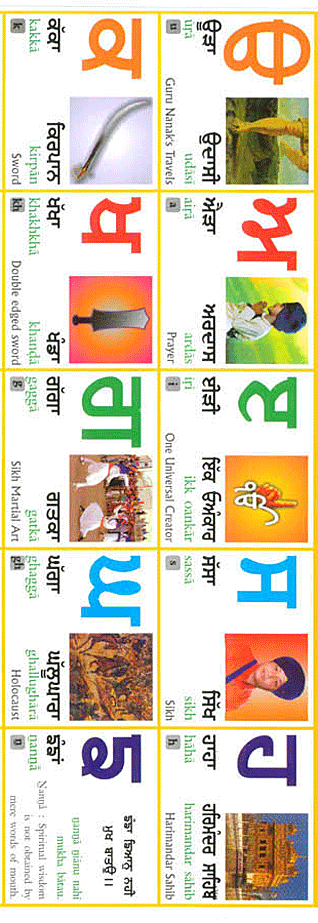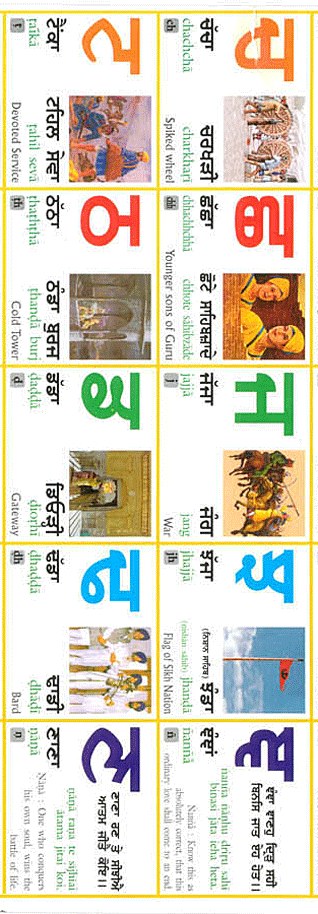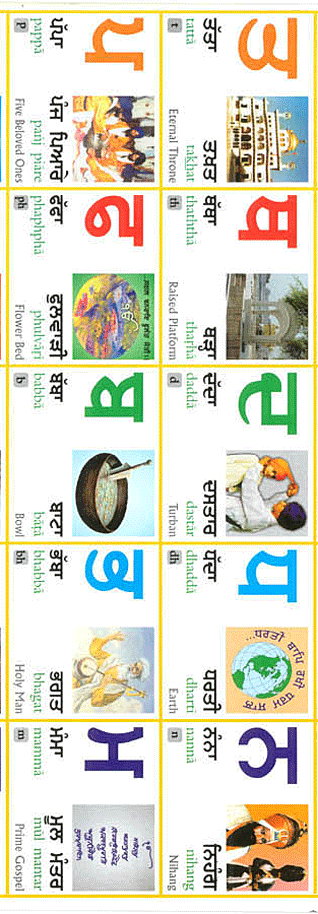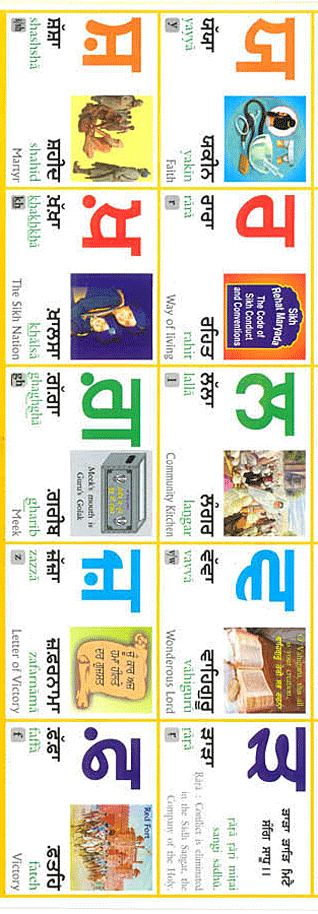Columnists
Painti - The Thirty Five
by ANARCHOCYCLIST
Yesterday, I started studying Punjabi again.
I made a brief attempt a while back, but gave up for lack of learning materials. This time, the difference is that I have a friend who wants to trade. He speaks Punjabi and wants to learn some Mandarin, so we're gonna get together semi-regularly to exchange language.
Punjabi is the 11th most spoken language in the world, the 2nd most popular language in Britain, and the 5th most popular in Canada. Here in Vancouver, Canada, it's also 5th, with many more speakers in neighbouring Surrey.
English speakers seem to be the most monolingual group around, but I think we have an obligation to try to learn at least a little bit about the languages that are spoken in our cities, rather than just assuming that everyone should learn our language.
It seems there's a bit of a lack of Punjabi learning materials. There's a book in the "Teach Yourself" series, which seems OK. It comes with two CDs, which is helpful for learning the pronunciation, but it's nowhere near the quality of a typical Pimsleur audio series.
Unfortunately, Pimsleur hasn't produced a set of Punjabi lessons, AFAICT ("as far as I can tell"). They have Hindi, but not Punjabi. I managed to find some materials published locally by the Sikh community, so if you're looking for materials, you might want to ask at the local gurdwara.
One big problem for English speakers who are starting to learn Punjabi is the existence of sounds that don't occur in English.
There are several sounds where an English speaker would say "those two sound the same to me", but they are distinct in Punjabi. Many of these are unaspirated versus aspirated consonants.
For the non-linguists, "aspirated" means a sound with an extra breath of air. If you hold your hand in front of your mouth, when you pronounce an unaspirated consonant you won't feel much air coming out, and you'll feel the puff of air come out for an aspirated consonant. (Keep in mind here that I'm not an expert in this linguistic terminology, nor am I an expert at Punjabi pronunciation; so take all of this with a big grain of salt.)
There are some other technical terms that might come in handy for understanding Punjabi pronunciation. People who are native speakers of Punjabi just make the sounds without analyzing. They don't have to know the technical details in order to produce the sounds naturally, but for those of us who are just starting, it takes a little explaining, especially for the sounds that initially sound identical to English-only speakers.
Fortunately, the Punjabi alphabet is normally listed in a nice tabular format, and each row and column of the table has a logical meaning, and these correspond nicely to the fancy linguistic explanations.
Here's a table of the letters in the standard order, and I've paired them up with what I think is the closest English letter. Keep in mind that all of these Punjabi letters have a distinct sound, and you'll have to listen a lot and try to imitate them.
Don't be deceived that you can get away with just fudging the English sounds. The linguistic terms should help explain how to start moving your tongue properly to produce them. The first and last rows have a mix of letters that don't quite fit in the same category so you have to ignore the headings (like "h" isn't nasal, etc.), but the rest of the rows are consistent with the headings.
|
|
voiceless |
voiced |
nasal |
||
|
|
unasp. |
asp. |
unasp. |
asp. |
|
|
(misc) |
ੳ (a) |
ਅ (i) |
ੲ (u) |
ਸ (s) |
ਹ (h) |
|
velar |
ਕ (k) |
ਖ (k) |
ਗ (g) |
ਘ (g) |
ਙ (ng) |
|
palatal |
ਚ (ch) |
ਛ (ch) |
ਜ (j) |
ਠ(j) |
ਞ (ny) |
|
retroflex |
ਟ (t) |
ਠ(t) |
ਡ (d) |
ਢ (d) |
ਣ (n) |
|
dental |
ਤ (t) |
ਥ (t) |
ਦ (d) |
ਧ (d) |
ਨ (n) |
|
labial |
ਪ (p) |
ਫ (p) |
ਬ (b) |
ਠ(b) |
ਮ (m) |
|
(misc) |
ਯ (y) |
ਰ (r) |
ਲ (l) |
ਵ (v) |
ੜ (r) |
The velar and palatal lines should be easy to figure out. Same idea as in English, except for the distinctions between aspirated and unaspirated.
The next two lines are more difficult. "Retroflex" means that the tip of the tongue curls back, so the bottom of the tongue faces towards the roof of the mouth a bit. That way, when the tongue is touched to the top to make the start of the sound, then it's actually the bottom of the tongue that touches.
The next line after that is the "dental" line, where the tip of the tongue starts on the teeth. this makes a softer "t" or "d" sound that might sound almost like a "th" sound a little bit. The same tongue positions are used for the nasal sounds at the ends of the lines.
The special cases are in the first and last rows, which I've labelled "misc". The first three letters in the first row are to indicate a vowel sound at the start of a word. Normally, vowel sounds are indicated by markings above and below the consonants, but not at the start of a word. The "s" and the "h" sound in that row are the same as in English AFAICT, although the letter used for "h" is also used in special circumstances to indicate certain tones ... I'm not clear on this part right now.
The special parts of the last line are the two "r" letters. The first one (ਰ) is like a Japanese "r", or a light Spanish "r". Not rolled, just a tongue flap near the front of the mouth. The second one (ੜ) is harder. It's called a retroflex flap. Same as the other retroflex letters, this involves the tip of the tongue curled back, but then flapping against the top.
This is the best explanation I can find ... it currently seems really hard for me to figure out how to make this sound just from listening to people say it, but maybe this explanation will help me produce it myself.
Well, that's what I've figured out for now. If anyone has any corrections or clarifications, please let me know so I can fix things. Otherwise, good luck in your studies.
Ride hard, ride free.
Conversation about this article
1: Roopinder Singh Bains (Surrey, British Columbia, Canada), January 06, 2008, 11:26 PM.
I wish Pakistan would recognize Punjabi as an official language. That would make Punjabi an international language :-)
2: Satvir Kaur (Boston, U.S.A.), January 07, 2008, 4:03 PM.
I currently teach a Punjabi class in our local gurdwara. It's really hard for children to figure out the sounds in the retroflex and dental lines. Because of the confusion they have from the "similar" sounding alphabets, it takes them a while to sort it out.
3: Carolyn (USA), August 20, 2014, 12:08 PM.
In 2012 Pimsleur came out with phase one Punjabi lessons. I've been trying to learns Punjabi for a number of years now. I don't have an 'ear' for languages, so pronunciation and especially recognizing the differences between the four types of Ts and Ds and different cha-chas, J, G, etc. has been very difficult. Being able to listen to the Pimsleur recording has helped amazingly. I'm still waiting for phase two. Any English speaking person wanting to learn Punjabi, to be able to understand it and be understood, should get it.






